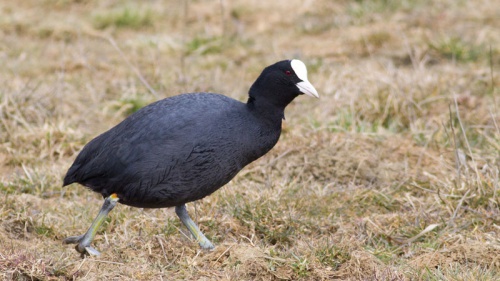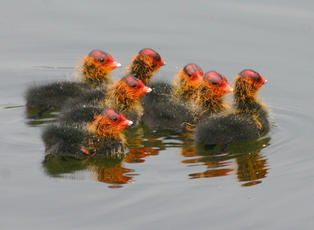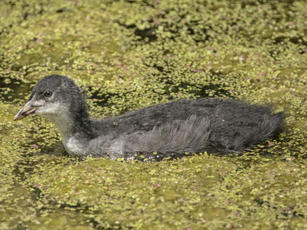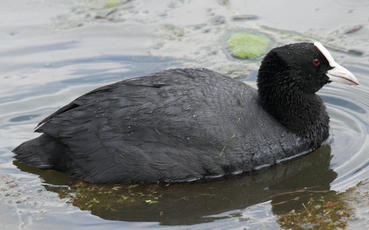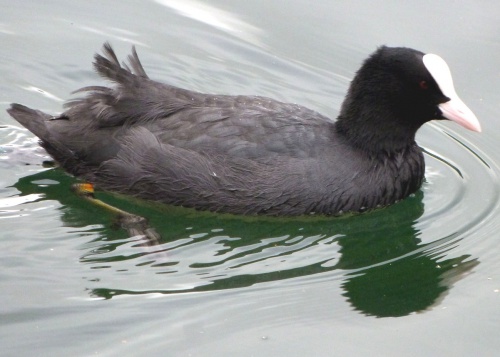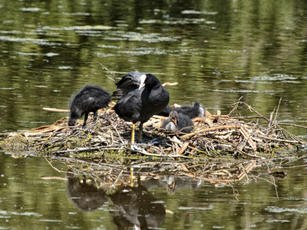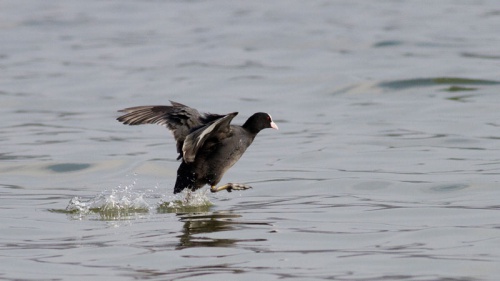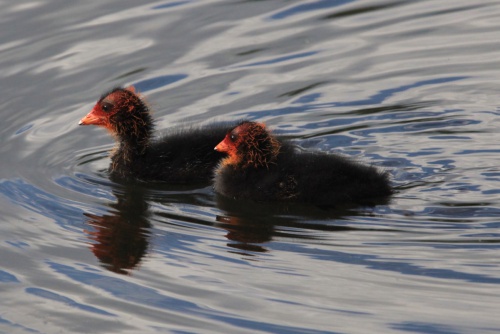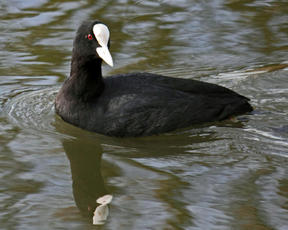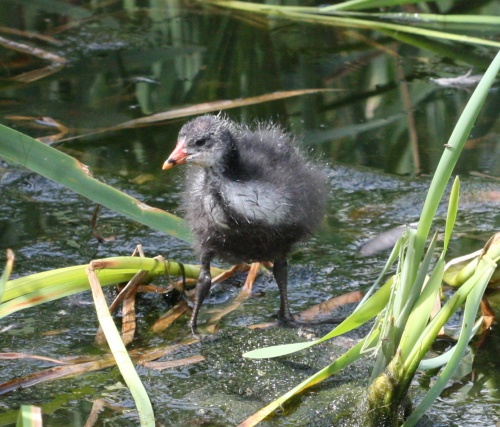Coot - Fulica atra
All black and larger than its cousin, the Moorhen, it has a distinctive white beak and 'shield' above the beak which earns it the title 'bald'. Its greenish feet have distinctive lobed flaps of skin on the toes, which act instead of webs when swimming. It patters noisily over the water before taking off and can be very aggressive towards others.
Mainly on freshwater lakes, gravel pits, reservoirs, rivers and town park lakes when deep enough. Sometimes seen offshore, especially in winter if freshwater areas are frozen.
All year round
Coots feed on aquatic plants, like duckweed and grasses, and animals such as snails and larvae brought up from the bottom of the pond or river. The nest is built in shallow water from vegetation, and usually in the shelter of vegetation but can be in the open. The young are able to leave the nest and swim (nidifugous) soon after hatching.
Common and widespread in Britain
Quite common in Leicestershire and Rutland both breeding and over-wintering in our area.
Leicestershire & Rutland Map
Enter a town or village to see local records
MAP KEY:
Yellow squares = NBN records (all known data)
Coloured circles = NatureSpot records: 2020+ | 2015-2019 | pre-2015
UK Map
Species profile
- Common names
- Coot, Eurasian Coot, Common Coot
- Species group:
- Birds
- Kingdom:
- Animalia
- Order:
- Gruiformes
- Family:
- Rallidae
- Records on NatureSpot:
- 2451
- First record:
- 01/01/1979 (Patricia Evans)
- Last record:
- 12/04/2024 (Braker, Michael)
Total records by month
% of records within its species group
10km squares with records
The latest images and records displayed below include those awaiting verification checks so we cannot guarantee that every identification is correct. Once accepted, the record displays a green tick.
In the Latest Records section, click on the header to sort A-Z, and again to sort Z-A. Use the header boxes to filter the list.


